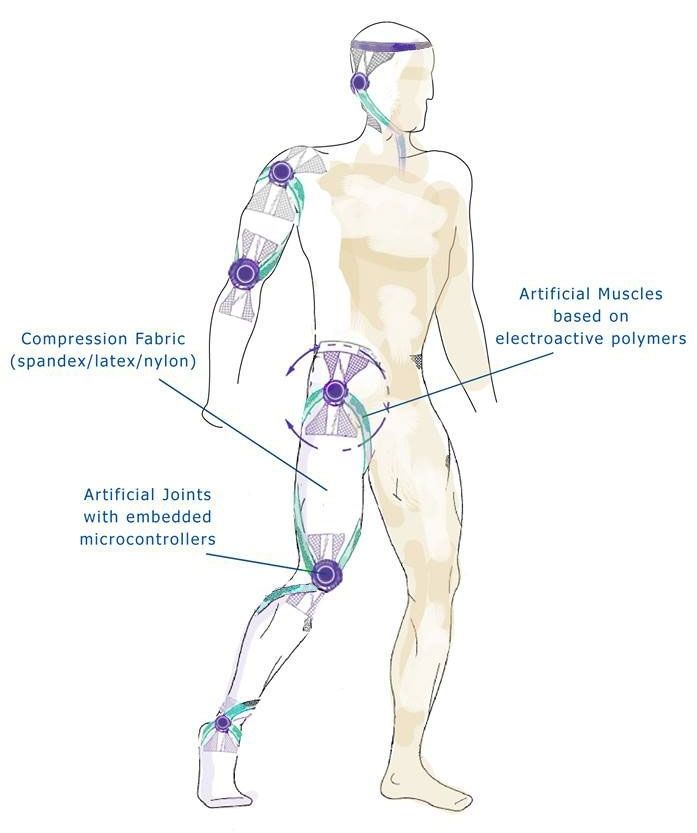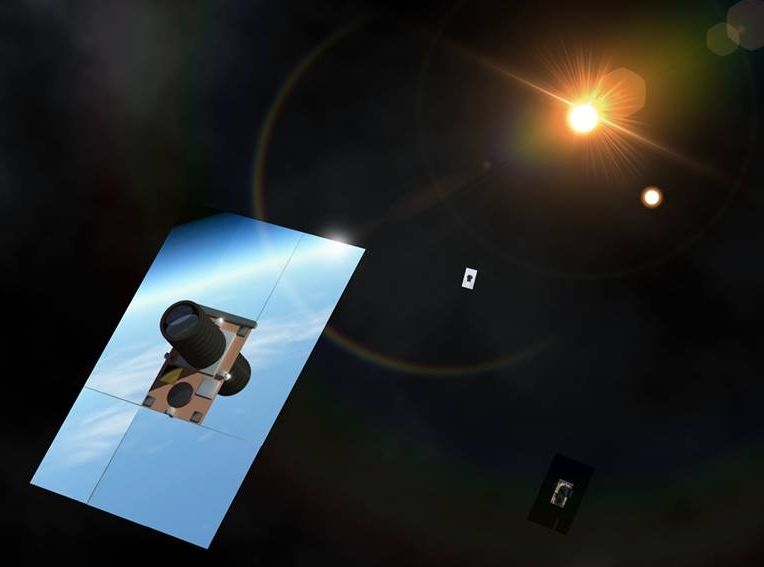The was launched in 2002 by the publishers of NASA Tech Briefs magazine to help stimulate and reward engineering innovation. The annual event has attracted more than 8,000 product design ideas from engineers, entrepreneurs, and students worldwide.


Researchers at The Ohio State University Wexner Medical Center and Ohio State’s College of Engineering have developed a new technology, Tissue Nanotransfection (TNT), that can generate any cell type of interest for treatment within the patient’s own body. This technology may be used to repair injured tissue or restore function of aging tissue, including organs, blood vessels and nerve cells.
Results of the regenerative medicine study published in the journal Nature Nanotechnology.
“By using our novel nanochip technology, injured or compromised organs can be replaced. We have shown that skin is a fertile land where we can grow the elements of any organ that is declining,” said Dr. Chandan Sen, director of Ohio State’s Center for Regenerative Medicine & Cell Based Therapies, who co-led the study with L. James Lee, professor of chemical and biomolecular engineering with Ohio State’s College of Engineering in collaboration with Ohio State’s Nanoscale Science and Engineering Center.

“This paper discusses the physics, engineering and mission architecture relating to a gram-sized interstellar probe propelled by a laser beam. The objectives are to design a fly-by mission to Alpha Centauri with a total mission duration of 50 years travelling at a cruise speed of 0.1c. Furthermore, optical data from the target star system is to be obtained and sent back to the Solar system. The main challenges of such a mission are presented and possible solutions proposed. The results show that by extrapolating from currently existing technology, such a mission would be feasible. The total mass of the proposed spacecraft is 23g and the space-based laser infrastructure has a beam power output of 15GW. Rurther exploration of the laser — spacecraft tradespace and associated technologies are necessary.”

Ray Kuzweil, a director of engineering at Google, reveals plans for a future version of Google’s “Smart Reply” machine-learning email software (and more) in a Wired article by Tom Simonite published Wednesday (Aug. 2, 2017).
Running on mobile Gmail and Google Inbox, Smart Reply suggests up to three replies to an email message, saving typing time or giving you ideas for a better reply.
However, that’s not what he’s best known for now: he’s a legend in the world of origami. His intricate designs are second to none, and they actually have applications back in engineering.
Just weeks after one research team appeared to put words in a leader’s mouth, here comes a new tool that can check questionable video for a pulse.
A recent demonstration showing how easy it is to spoof video of a world leader recently made headlines, foretelling a future where robot-created videos cause political and financial havoc. But now comes word of an antidote. On Monday, a group of computer scientists from Carnegie Mellon University’s Software Engineering Institute published new research showing how algorithms can tell whether the person on-screen has a human heartbeat. The technique will help future intelligence analysts, journalists, or just scared television viewers detect the difference between spoofed video and the real thing.
In case you missed the original news about AI –created fake video, last month a team of researchers at the University of Washington revealed a tool that can change footage of someone’s face to match an audio clip, making it look like the person is saying things they aren’t.
Synthetic biologists at Harvard’s Wyss Institute for Biologically Inspired Engineering and associates have developed a living programmable “ribocomputing” device based on networks of precisely designed, self-assembling synthetic RNAs (ribonucleic acid). The RNAs can sense multiple biosignals and make logical decisions to control protein production with high precision.
As reported in Nature, the synthetic biological circuits could be used to produce drugs, fine chemicals, and biofuels or detect disease-causing agents and release therapeutic molecules inside the body. The low-cost diagnostic technologies may even lead to nanomachines capable of hunting down cancer cells or switching off aberrant genes.
A new type of camera built by Stanford engineers and funded by the NSF and Intel generates a four dimensional image that is capable of capturing nearly 140 degrees of information.
The 4D camera, built by Donald Dansereau, a postdoctoral fellow in electrical engineering and Gordon Wetzstein, assistant professor of electrical engineering at Stanford, along with colleagues from the University of California, San Diego is the first single-lens, wide field of view, light field camera ever made.
With current cameras robots have to change position to get multiple perspectives of their surroundings in order to maneuver in complex environments and understand the objects within those environments.

In the hopes of rising above the laws and regulations of terrestrial nations, a group of Silicon Valley millionaires has bold plans to build a floating city in Tahiti, French Polynesia. It sounds like the start of a sci-fi dystopia (in fact, this is the basic premise behind the video game Bioshock), but the brains behind the project say their techno-libertarian community could become a paradise for technological entrepreneurship and scientific innovation.
The Seasteading Institute was set up in 2008 by billionaire PayPal founder Peter Thiel and software engineer, poker player, and political economic theorist Patri Friedman. Both ardent libertarians, their wide-eyed mission is to “establish permanent, autonomous ocean communities to enable experimentation and innovation with diverse social, political, and legal systems.”
“Seasteading will create unique opportunities for aquaculture, vertical farming, and scientific and engineering research into ecology, wave energy, medicine, nanotechnology, computer science, marine structures, biofuels, etc,” their website reads.
